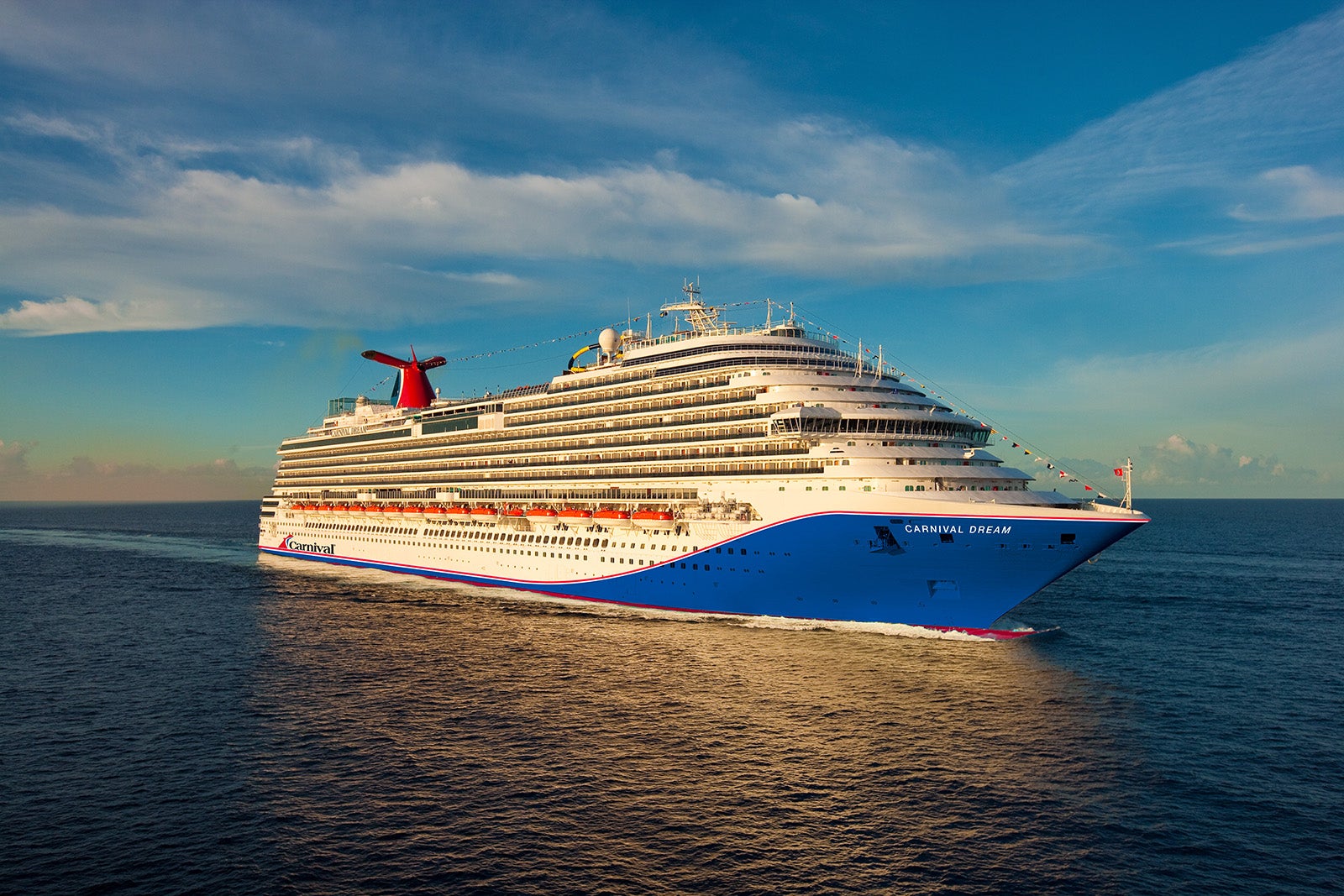It’s official: The days of go-go growth at cruise giant Carnival Corporation are over — at least for a few years.
The debt-laden parent company of Carnival Cruise Line, Princess Cruises, Holland America and six other major cruise brands won’t be ordering many new ships for delivery over the rest of the decade, CEO Josh Weinstein suggested on Wednesday during a conference call with Wall Street analysts.
In fact, the company soon could go an entire year without unveiling a single new vessel across any of its brands — something that has never happened in its recent history.
For more cruise news, guides and tips, sign up for TPG’s cruise newsletter.
“We don’t expect any new ships in 2026 and anticipate just one or two new-builds each year for several years thereafter,” Weinstein said during the call, which came after the company reported yet another billion-dollar-plus loss for its most recent quarter.
Fewer ships on the way
Already, Carnival Corporation’s pipeline of new ships on order is running thin. The company has just five ships on order for its nine brands — all ordered before the COVID-19 pandemic brought about a sharp downturn in cruising.
They include new ships for the Carnival and Seabourn brands due to begin sailing in 2023, and new ships for the Princess and Cunard brands arriving in 2024.
The company has just a single ship on order for 2025, a new vessel for Princess.
Related: The 9 most exciting new ships coming in 2023
Sign up for our daily newsletter
Notably, as of now, Carnival Corporation doesn’t have any ships on order for five of its nine brands including Holland America, Costa Cruises and U.K.-based P&O Cruises.
“This is our lowest order book in decades,” Weinstein noted on the call with Wall Street analysts.
A pathway out of debt
The shift away from new-ship growth comes as Carnival Corporation works toward paying down the massive debt it took on to survive the last three years when cruising ground to a halt due to the pandemic and revenue at cruise lines plummeted.
On Wednesday, the company reported that its total debt stood at $34.55 billion, up from less than $12 billion at the start of 2020. For context, Carnival Corporation made about $2.9 billion in profits in its last good year (2019).
As Carnival Corporation returns to profitability over the coming years, it plans to channel much of its cash flow toward paying down this debt in lieu of capital spending on things like new ships, Weinstein suggested on Wednesday.
“Going forward, we are committed to using our expected cash flow strength to repair the balance sheet over time, and we’ll be disciplined and rigorous in making new-build decisions accordingly,” he said.
The company also is cutting spending on all sorts of other things, from around-the-clock pizza on ships to fuel use.
“We actively managed down our spend by over $500 million during 2022, and we’ve taken a hard look at 2023 and beyond and reshaped investment spending by $300 million annually for a cumulative reduction of $1.7 billion,” Weinstein said.
Related: Carnival CEO won’t rule out brand sales to raise cash
3 more ships to leave the company
The cutback in ship ordering at Carnival Corporation comes on top of the early retirement of 23 vessels across the company’s nine brands during the pandemic as part of cost-cutting moves. The company went into the pandemic with 105 vessels in all. Even after quite a few new ship additions in the past two years (ships that already were in the pipeline), it’s now down to just 92 vessels.
On Wednesday, the company revealed that it planned to retire three more vessels in the near future as part of additional cost-cutting moves, two from its Costa brand and one from an undisclosed second line.
Taken together, the ship retirements and slowing of ship orders at Carnival Corporation are creating an unprecedented period of slow growth for the company when it comes to cruise ship capacity.
During Wednesday’s conference call, Carnival Corporation chief financial officer David Bernstein said the company’s total fleet capacity in 2023 would only be 3.3% higher than it was in 2019.
Several of Carnival Corporation’s brands including Holland America and Costa are now smaller than they were four years ago.
Cruise ships take several years to build from the time they are ordered, so even if Carnival Corporation were to soon place new orders for ships, the brands would be unlikely to return to their former sizes for some time.
A different tack than Royal Caribbean Group
Carnival Corporation’s slow-the-growth strategy is in contrast to the strategies currently in motion at some of its biggest competitors.
In an exclusive interview with TPG earlier this month, Royal Caribbean Group president and CEO Jason Liberty suggested the company wouldn’t dial back on orders for new cruise vessels in the coming years, despite record levels of debt on its balance sheet, too.
While Royal Caribbean Group has paused new ship orders since the COVID-19 pandemic began in early 2020, it still plans to roll out new vessels for all its brands at a steady clip over the coming decade, Liberty suggested during the interview.
Royal Caribbean Group is the second biggest cruise company in the world after Carnival Corporation. It’s the parent company of Royal Caribbean, Celebrity Cruises and Silversea Cruises, and it also owns a partial stake in Germany’s TUI Cruises and Hapag-Lloyd Cruises.
The Royal Caribean brand alone currently has four vessels on order for delivery in 2023, 2024, 2025 and 2026, respectively — three of which will be part of an all-new class of record-sized vessels. The Celebrity brand has two ships coming in 2023 and 2025. Silversea has two ships on the way for 2023 and 2024.
“Our ambitions are to continue to grow each of our brands in their segments, because we think the segments that we are focused on … have a lot of runway to them,” Liberty told TPG. “They are all very underpenetrated globally.”
Carnival Corporation’s two other main rivals in the cruise business, Norwegian Cruise Line Holdings and MSC Group, also have significantly more ships on order for the coming years than it does.
Norwegian Cruise Line Holdings, which is the parent company of Norwegian Cruise Line, Oceania Cruises and Regent Seven Seas Cruises, has eight vessels on order for delivery through 2027.
MSC Group, which is the parent company of MSC Cruises and Explora Journeys, has 10 ships on order. Six of the vessels are for the Explora Journeys brand, which is a new luxury brand scheduled to start up in 2023.
Ship occupancies still below normal
Weinstein’s comments about ship orders on Wednesday came after Carnival Corporation reported a $1.6 billion loss for the three months ending on Nov. 30.
Occupancy on the company’s ships for the quarter was 85%, which was up from 84.2% in the previous quarter but still well below normal. By comparison, occupancy at the line’s brands during the same quarter in 2019 were over 100% — something that is possible when more than two people stay in some cabins.
The occupancy level for the most recent quarter was below Wall Street expectations.
That said, Weinstein was optimistic on the call that the company’s brands would return to normal occupancy levels by the summer of 2023, noting that bookings for the coming year have been strong of late.
Weinstein suggested he expected a surge of bookings during the upcoming “wave season” — the traditionally strong period for cruise bookings that starts in January.
“We enjoyed a strong response to our recent Black Friday and Cyber Monday [promotions], and the momentum has continued into December, building our base occupancy and marking an early start to a strong wave season ahead,” he said.
Planning a cruise? Start with these stories:





















Discussion about this post